Synopsis- India’s urban commuters face severe traffic congestion, with cities like Kolkata, Bengaluru, and Pune ranking among the worst globally. The article highlights the key causes of this crisis and the efforts being made to improve traffic management in 10 major cities.
The urban commuters in India experience some of the lowest speeds in traffic worldwide with some cities reported to take more than 30 minutes to travel a distance of 10 kilometers. Kolkata, Bengaluru, and Pune are also among the worst and all showcase the scenario of rapid urbanization, lack of proper infrastructure and increased vehicles. The article talks about 10 cities having Slowest moving traffic in India.
1. Kolkata, West Bengal

- Primary Reasons: Kolkata is congested due to a combination of its overcrowded commercial zones, the small colonial era roads, which are not well suited to handle heavy traffic, and the highest vehicle to road ratio in the country. The infrastructure of the city is of British origin and most of the arterial roads cannot support the number of vehicles in the city.
- Impact: Traffic delays result in commuters wasting more than 110 hours a year, which is a big burden on productivity and life quality. The economic impact is not only limited to loss of time but also greater fuel consumption and costs of vehicle maintenance.
- Government Measures: The state government has been keen on enhancing transport by ensuring that buses are improved and the expansion of the metro is being done continuously. There is the implementation of traffic management by improving signal coordination and digital monitoring systems.
2. Bengaluru, Karnataka
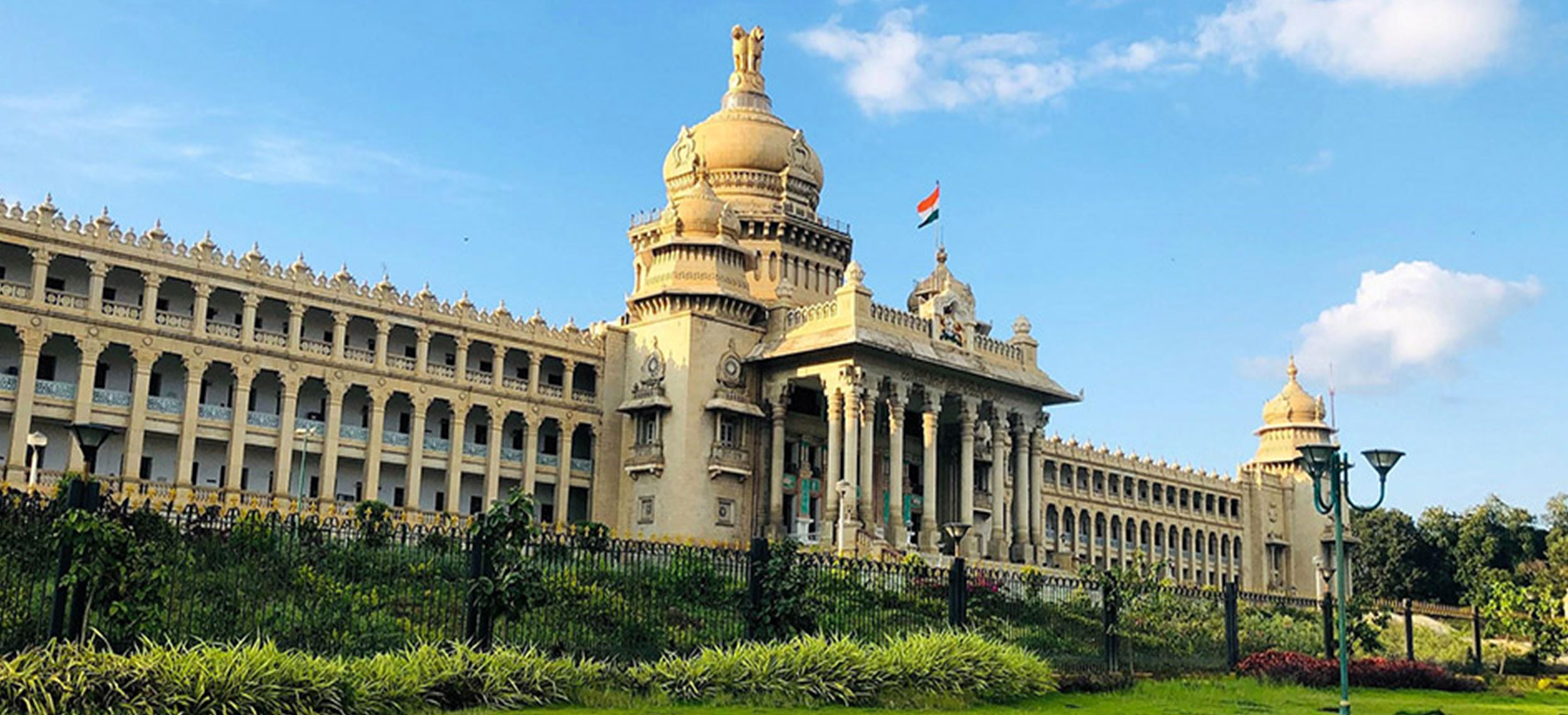
- Key Reasons: The Silicon Valley of India is experiencing a serious congestion as the growth of the IT sector is far exceeding the development of infrastructure. Technology parks that are clustered around particular locations result in peak-hour bottlenecks and the continuous construction of the metro introduces temporary inconveniences.
- Impact: The IT sector alone incurs losses of around 7,000 crore per year, and the total economic impact is 20,000 crore per year. Traffic jam influences the work-life balance and decreases the productivity of the employees considerably.
- Government Initiatives: Intelligent Transport Systems (ITS) and Bangalore Traffic Improvement Project (BTRAC) have demonstrated to be effective in the area of data-based traffic management. The city is increasing the metro coverage and adopting AI-based traffic lights.
3. Pune, Maharashtra
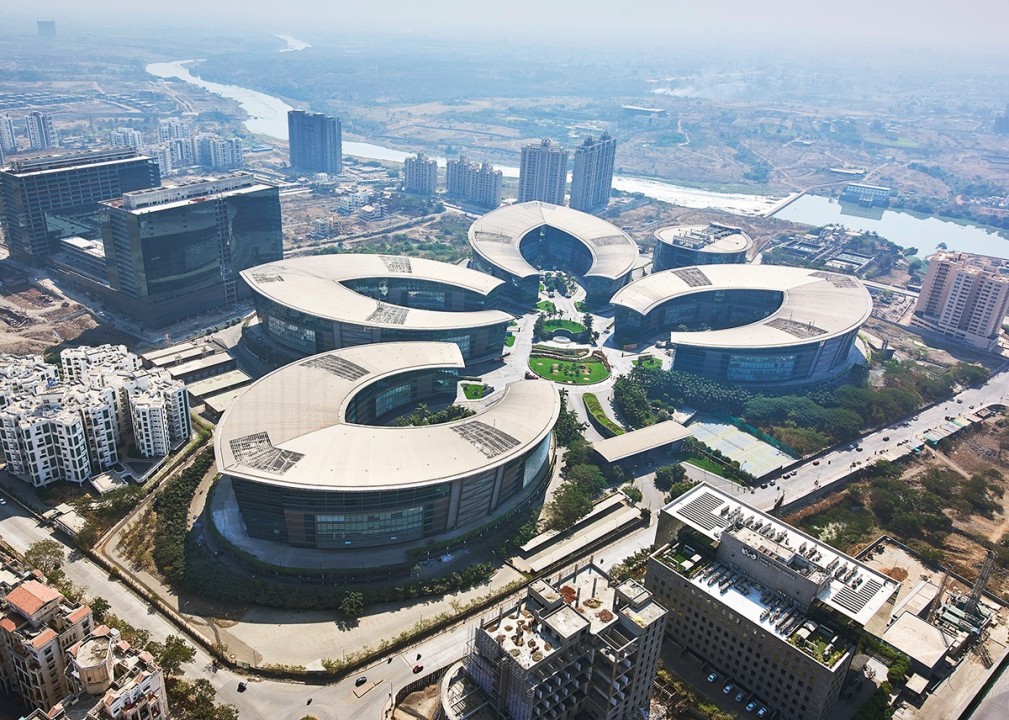
- Key Reasons: Pune has grown swiftly as an IT and education centre and its urban planners have been unable to keep up. The old urban infrastructure is finding it difficult to serve the increasing number of vehicles and poor road planning is one of the reasons that cause bottlenecks.
- Impact: The commuters in the city are losing 108 hours every year to traffic congestion that affects their productivity and personal time. The economic cost involves higher costs of transport and decreased business efficiency.
- Government Measures: The municipal governments are adopting intelligent traffic control and developing transport systems. Widening of roads and construction of flyovers are being undertaken to solve the main congestion areas.
4. Hyderabad, Telangana

- Major Reasons: Hyderabad experiences the growing number of vehicles because of the rapid population growth and the development of the IT industry, despite the construction of metro and flyovers. The trend in the ownership of personal cars has increased the level of congestion.
- Impact: Commuters waste 85 hours every year in traffic and the current construction works exacerbate the situation. The city’s business districts experience severe peak-hour congestion.
- Government measures: H-CITI programme of 7,032 crore investment in 38 projects is to solve the traffic jam by use of grade separators, flyovers, and tunnel corridors. The average journey speeds are to be raised to 15kmph to 35kmph.
5. Chennai, Tamil Nadu
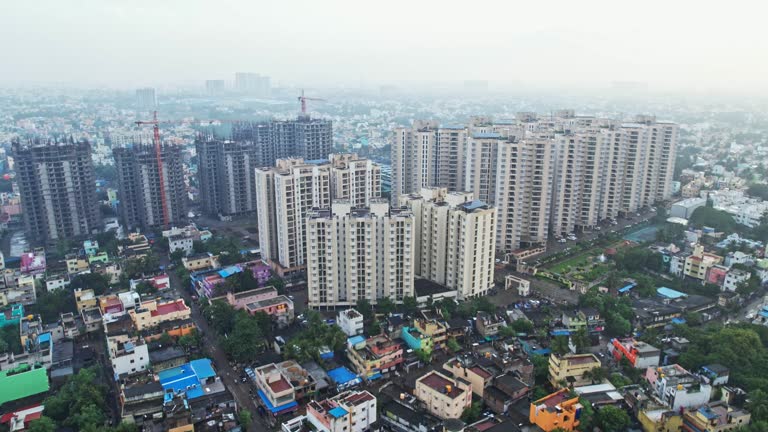
- Key Reasons: Urban sprawl and industrial corridor development have developed junction bottlenecks around the city. The coastal geography of Chennai restricts the choice of expansion and it is compelled to develop along crowded corridors.
- Impact: 94 hours of annual delays by the commuters are experienced in the city and more urbanization is consuming the precious agricultural and forest land. Environmental issues in the metropolitan region are aggravated by traffic jams.
- Government Measures: Infrastructure is geared towards the development of arterial roads and the connectivity of transportation to the people. There are smart traffic management systems to manage the timing of signals and reduce delays.
Also read: 7 Fastest Growing Infrastructure Areas in Bangalore in 2025 – Where Should You Invest?
6. Mumbai, Maharashtra
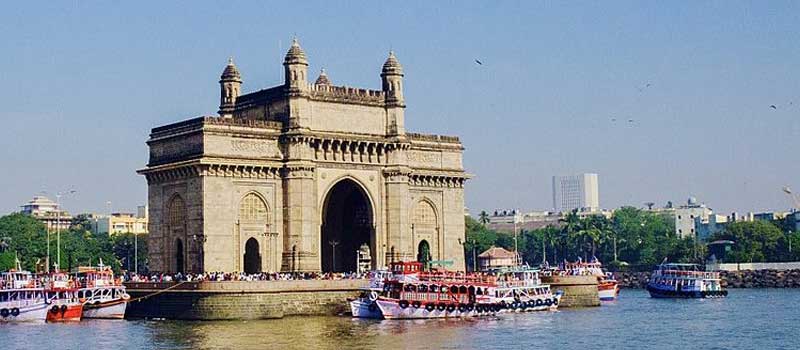
- Key Reasons: Although the city has a large rail system, the number of personal vehicles in Mumbai still exceeds the capacity of the roads. The linear geography of the city concentrates the traffic in a few north-south corridors, forming consistent bottlenecks.
- Impact: Traffic congestion costs commuters 103 hours a year in terms of time lost in traffic jams, which is a huge burden to the financial capital of India. The economic cost extends to business operations and logistics efficiency throughout the metropolitan area.
- Government Measures: Smart Traffic Management System in Mumbai has managed to cut down the peak hour congestion by 30%. Technological solutions to the problem are the Coastal Road project and the CCTV-based adaptive signal control systems.
7. Ahmedabad, Gujarat
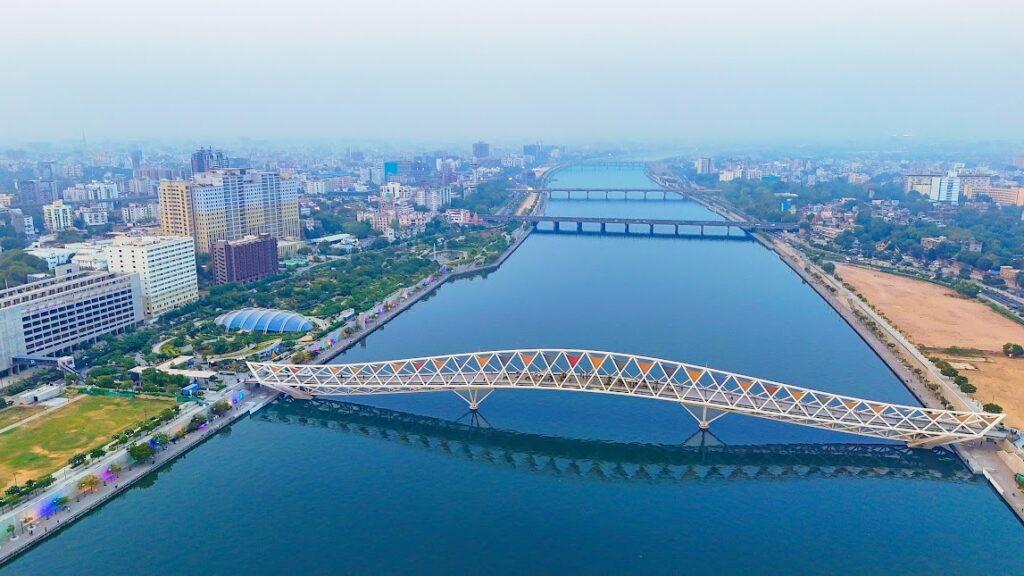
- Key Reasons: Traffic issues in Ahmedabad are fuelled by increasing the number of vehicles and a lack of road capacity in the arterials. The commercial and cultural center of the city is a factor that draws growing volumes of traffic that surpasses the infrastructure.
- Impact: The loss in productivity every year is up to 73 hours per commuter, which impacts business performance and personal time.
- Government Measures: Municipal authorities are putting in place road capacity and improvements in public transportation. Smart traffic management projects concentrate on the optimization of the available infrastructure.
8. Ernakulam, Kerala

- Main Reasons: The high number of tourists and the inadequacy of roads lead to continuous congestion in the business hub of Kerala. The topography and underdeveloped road system in the city worsen the situation in traffic management.
- Impact: Traffic congestion costs commuters 88 hours per year in time wasted in traffic jams, and the impact of tourism-related traffic introduces seasonal change to both the pattern of congestion and the timing of delays. It has an economic effect on such important sectors as tourism and port.
- Government Measures: Infrastructure developments are aimed at increasing the capacity of roads and bettering the management of traffic flows. There is increased connectivity of public transport to minimize reliance on personal vehicles.
9. Jaipur, Rajasthan

- Key Causes: Old City narrow lanes and markets form critical bottlenecks and the tourist traffic contributes to congestion during peak seasons. The heritage constraints restrict the opportunities of infrastructure expansion.
- Impact: Annually, the loss of time amounts to 83 hours per commuter affecting residents and the tourism industry. There is high congestion reported during evening rush hours between 5-7 PM.
- Government Measures: Infrastructure enhancements are being done, which are heritage sensitive and the emphasis is on the management of traffic around the historical places. They have parking systems available to the general population and traffic diversion systems to deal with congestion caused by tourists.
10. New Delhi, Delhi
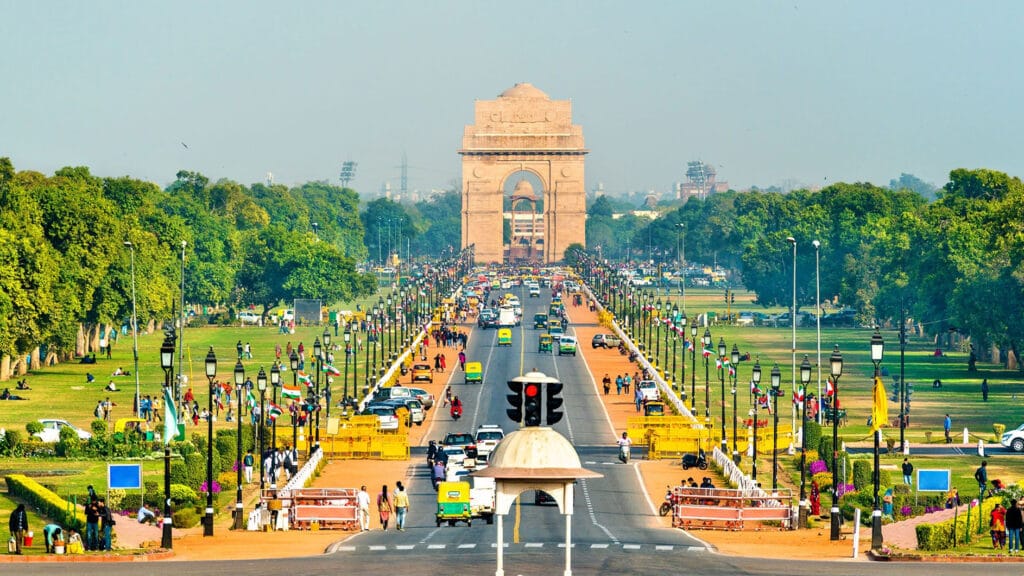
- Major Reasons: In spite of the extensive metro networks, continuous construction, intrusions and high volumes of traffic present chronic issues. Traffic is mixed and has a variety of vehicle types that complicate traffic management.
- Impact: 76 hours of productivity loss per commuter is observed in the national capital. The incidences of road rage can be seen frequently at peak times.
- Government Measures: The 100 day action plan entails repair work on 54 major road stretches with a total of 120 kilometers of length, ₹51,000 crore is to be allocated to the arterial road infrastructure development and the Golden line metro extension is expected to enhance the airport connectivity by March 2026.
Top 10 Indian Cities with Slowest Traffic in 2024-25
| City | State | Global Rank | Travel Time per 10 km | Annual Hours Lost | Key Traffic Issues |
| Kolkata | West Bengal | #2 | 34 min 33 sec | 110 hours | Narrow colonial roads, highest vehicle-to-road ratio |
| Bengaluru | Karnataka | #3 | 34 min 10 sec | 117 hours | IT sector growth, metro construction, concentrated tech parks |
| Pune | Maharashtra | #4 | 33 min 22 sec | 108 hours | Rapid IT/education hub expansion, inadequate planning |
| Hyderabad | Telangana | #18 | 31 min 30 sec | 85 hours | Population growth, IT expansion, ongoing construction |
| Chennai | Tamil Nadu | #31 | 30 min 20 sec | 94 hours | Urban sprawl, industrial corridors, coastal geography limits |
| Mumbai | Maharashtra | #39 | 29 min 26 sec | 103 hours | Limited north-south corridors, high private vehicle volume |
| Ahmedabad | Gujarat | #43 | 29 min 3 sec | 73 hours | Rising vehicle ownership, insufficient arterial capacity |
| Ernakulam | Kerala | #50 | 28 min 30 sec | 88 hours | Tourist influx, limited road network, geography constraints |
| Jaipur | Rajasthan | #52 | 28 min 28 sec | 83 hours | Narrow old city lanes, tourist traffic, heritage constraints |
| New Delhi | Delhi | #122 | 23 min 24 sec | 76 hours | Construction, encroachments, mixed traffic conditions |
Source: Tom Tom Traffic Index 2024
Final Thoughts
The traffic congestion crisis in India is one of the biggest urban problems of the 21st century as three cities are listed among the top 5 in the worst traffic conditions on a global level and economic losses are in the billions per year. The crisis requires a concerted effort of both government programs and citizen responsibility, a mix of infrastructure investment with behavioral change and technological innovation.
Written by Prajwal Hegde


